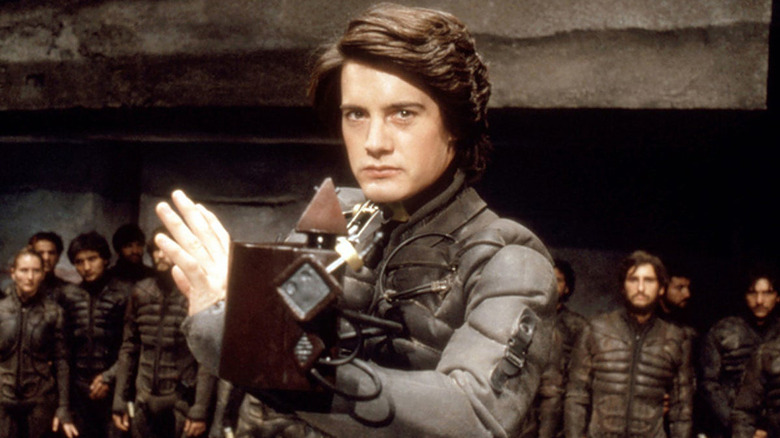Denis Villeneuve’s Dune 2, while closely following Frank Herbert’s source material, takes creative liberties to enrich the narrative for the screen. One notable departure is the omission of Paul and Chani’s first child, a decision made to streamline the story and maintain narrative focus. Despite these changes, Dune 2 adeptly captures a crucial aspect of Paul Atreides’ character that David Lynch’s Dune failed to grasp.
In Lynch’s adaptation, Paul’s arc culminates in a heroic showdown with Feyd-Rautha, solidifying him as a noble and benevolent figure. However, this portrayal diverges from Herbert’s original depiction, which presents Paul in a more morally ambiguous light.
In Dune 2, when Paul becomes the Kwisatz Haderach after consuming the Water of Life, his transformation is not portrayed as a heroic act but rather as a reluctant acceptance of his destiny. While part of him resists the path laid out before him, he ultimately succumbs to the allure of power, aware of the devastating consequences it may bring. This nuanced portrayal highlights Paul’s inner conflict and foreshadows his descent into darkness.
Villeneuve’s adaptation effectively captures Paul’s moral ambiguity and the weight of his decisions, laying the groundwork for his transformation from reluctant hero to complex antihero. In contrast, Lynch’s Dune overlooks this aspect of Paul’s character, presenting him as a straightforward hero without exploring the moral complexities inherent in his journey.
By staying true to Herbert’s vision and delving into Paul’s inner turmoil, Dune 2 offers a more nuanced and compelling portrayal of its protagonist, enriching the overall narrative and deepening the audience’s engagement with the story.
FAQ
How does Dune 2 differ from David Lynch’s portrayal of Paul Atreides?
In Denis Villeneuve’s Dune 2, Paul Atreides’ character is depicted with greater moral ambiguity compared to David Lynch’s adaptation. While Lynch’s portrayal emphasizes Paul as a heroic figure, Villeneuve’s interpretation delves into his inner conflict and reluctance to embrace his destiny, setting the stage for a more complex character arc.
Why was Paul and Chani’s first child omitted from Dune 2?
The decision to omit Paul and Chani’s first child from Dune 2 was made to streamline the story and maintain narrative focus. With a limited runtime and emphasis on key story elements, the filmmakers opted to prioritize other aspects of the source material.
How does Paul’s transformation in Dune 2 reflect his character arc?
In Dune 2, Paul’s transformation into the Kwisatz Haderach is portrayed as a reluctant acceptance of his destiny, marked by inner conflict and awareness of the consequences. This contrasts with Lynch’s portrayal, which presents Paul’s ascension as a heroic act without exploring the moral complexities of his journey.
What implications does Paul’s moral ambiguity have for the story?
Paul’s moral ambiguity in Dune 2 foreshadows his descent into darkness and sets the stage for a more nuanced character arc. By grappling with the temptations of power and the weight of his decisions, Paul evolves from a reluctant hero to a complex antihero, enriching the overall narrative and deepening audience engagement.
How does Dune 2 stay true to Frank Herbert’s original vision?
While Dune 2 takes creative liberties to adapt the source material for the screen, it remains faithful to Frank Herbert’s original vision by capturing the essence of Paul Atreides’ character and exploring the philosophical themes of the Dune universe. Through its nuanced portrayal and thematic depth, the film honors the legacy of Herbert’s iconic sci-fi saga.
